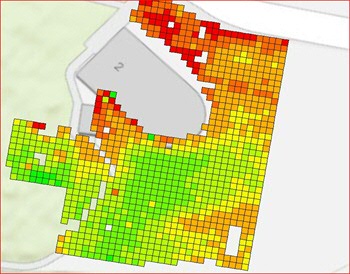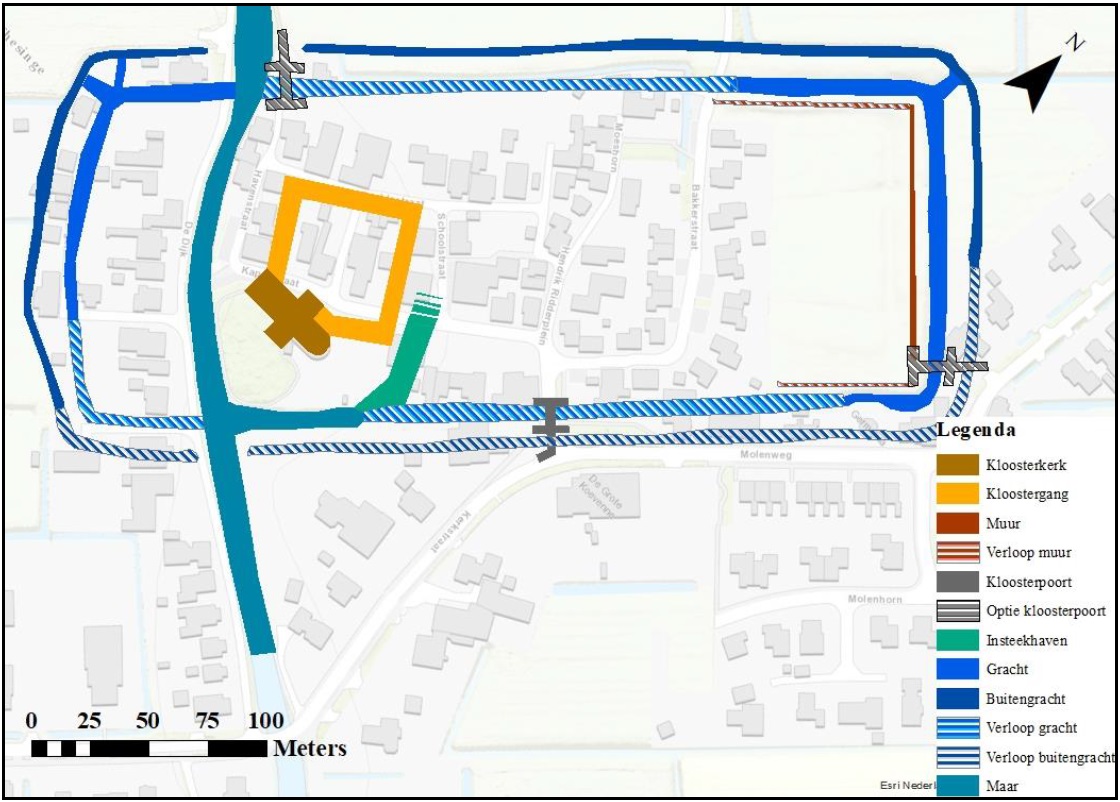Student and residents maps Thesinge’s convent buildings
An Archaeology student of the University of Groningen has mapped a part of the former Benedictine convent in Thesinge, together with the village’s residents. By measuring the relative resistance in the ground, the team has discovered part of the cloisters and boundary walls of the old convent. The research is the result of a request from the historical committee in Thesinge to the Language, Culture and Communication Science Shop.
Living on convent grounds
If you have familiarized yourself a bit with Groningen during the Middle Ages, you will know that there were at least 30 convents in the province during this time. One of these was located in the village of Thesinge, near Ten Boer. Previous research has shown that industrious nuns produced liturgical masterpieces and kept up an impressive sewage system here. The residents of Thesinge feel connected to this history and are continuously reminded of the old convent, called ‘Germania’, when they find ornamental stones and Roman bricks while digging in their gardens. But where exactly was this convent located? And what made it a typically Benedictine convent? Archaeology student Margreet Wieske used these questions as the basis for her thesis.

Resistance measurements
To map the convent grounds in an accessible and cheap way, Margreet conducted her research using an electrical resistance meter. This meter is a device that has two probes with electrodes on them, which can be stuck into the ground. By allowing a current to flow through the electrodes, you can measure the relative resistance. The higher the resistance, the likelier it is that there is something in the ground. In this way, you can create an image of where the remaining foundations and former moats of the convent are located – without having to dig them up.
Researching together with residents
Margreet carried out about 2,500 measurements on the grounds together with her fellow students. The residents of Thesinge continuously helped them with their research. Sometimes their help consisted simply of providing access to their gardens, but more often than not they also actively helped with the measurements. This made it possible to visualize a large part of the surroundings of the former convent church and its boundary walls.

Follow-up
Margreet’s thesis has since been completed, but the research into the convent continues. The residents have constructed their own ohmmeter in the meantime, and will carry on the research independently. At the same time, two history students have started a follow-up project.
| Last modified: | 04 August 2021 3.07 p.m. |
More news
-
15 September 2025
Successful visit to the UG by Rector of Institut Teknologi Bandung
The Rector of Institut Teknologi Bandung (ITB), Prof Tatacipta Dirgantara, paid a 3-day visit to the UG.
-
04 July 2025
University of Groningen awards various prizes during Ceremony of Merits
The UG awarded different prizes to excellent researchers and students during the Ceremony of Merits on 4 July 2025.
-
02 July 2025
Relinde Weil reappointed as a member of the Supervisory Board UG
The Minister of Education has reappointed Relinde Weil for a second term as a member of the Supervisory Board of the University of Groningen.
